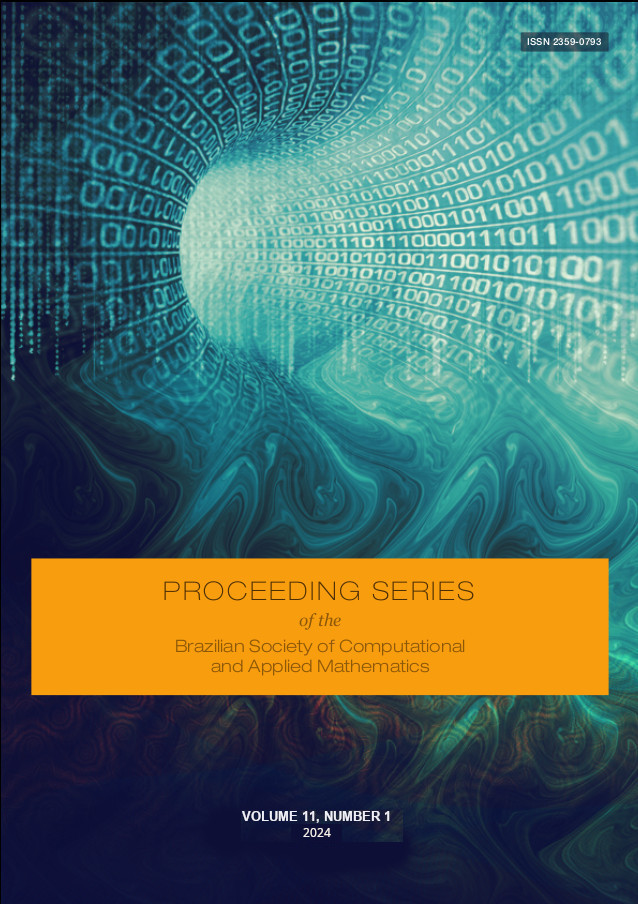Investigation of the Aerodynamic Benefits of Base Bleed Technology on Artillery Shells
DOI:
https://doi.org/10.5540/03.2025.011.01.0416Keywords:
Aerodynamics, Ballistic Trajectory, CFD, Turbulence ModelingAbstract
This article discusses the use of base bleed technology to enhance the range and accuracy of artillery systems. Base bleed technology involves the use of a combustible substance to provide additional thrust to an artillery shell, which reduces drag and increases velocity. To study the phenomena of base bleed technology, the article employs computational fluid dynamics (CFD) using the Finite Volume Method (FVM). A two-dimensional and axisymmetric mesh is constructed, and the RANS turbulence models named Shear-Stress Transport κ − ω are used to simulate the aerodynamic issues involved. The article presents the results of the simulation, including the drag coefficient, pressure and velocity fields. The verification of the range extension generated by the base bleed technology is done with a proprietary MATLAB® code that implements the modified point-mass trajectory model (MPMTM), regulated by NATO (STANAG 4355), and previously validated with commercial software reference for aerospace industry named PRODAS®.
Downloads
References
Ansys® Academic Research Fluent, Help System, Fluent Theory Guide. Release 2021R2. USA: Ansys Inc., 2021, p. 1024.
L. Baranowski, P. Majewski, and J. Szymonik. “Explicit form of the “modified point mass trajectory model” for the use in Fire Control Systems”. In: Bulletin of the Polish Academy of Sciences: Technical Sciences 68.No. 5 (i.a. Special Section on Modern control of drives and power converters) (2020), pp. 1167–1175. [URL](http://journals.pan.pl/Content/117694/PDF/22_D1167-1175_01415_Bpast.No.68-5_30.10.20_.pdf).
R. M. Lucena et al. “Numerical Aerodynamic Simulation of an Artillery Projectile with a Base Bleed System”. In: Brazilian Congress of Thermal Sciences and Engineering. 04 set. 2022. Bento Gonçalves, RS, Brasil: ABCM, 2020, p. 7. doi: 10.26678/ABCM.ENCIT2020.CIT20-0617. [URL](https://abcm.org.br/proceedings/view/CIT20/0617).
O. M. K. M. Mahmoud et al. “Computational investigation of base drag reduction for a projectile at different flight regimes”. In: International Conference on Aerospace Sciences & Aviation Technology. 25 jun. de 2021. Cairo, Egito: Military Technical College, 2009, p. 14. [URL](https://asat.journals.ekb.eg/article_22270_3367f3fe4aaf5352ba793eb772bcda01.pdf).
R. McCoy. Modern Exterior Ballistics: The Launch and Flight Dynamics of Symmetric Projectiles. 2nd ed. Atglen, USA: Schiffer Publishing, 2012, p. 328.
F. R. Menter. “Review of the shear-stress transport turbulence model experience from an industrial perspective”. In: International Journal of Computational Fluid Dynamics 23.4 (2009), pp. 305–316. doi: [http://dx.doi.org/10.1080/10618560902773387](http://dx.doi.org/10.1080/10618560902773387).
F. Nicolás-Pérez et al. “On the accuracy of RANS, DES and LES turbulence models for predicting drag reduction with Base Bleed technology”. In: Aerospace Science and Technology 67 (2017), pp. 126–140. issn: 1270-9638. doi: [https://doi.org/10.1016/j.ast.2017.03.031](https://doi.org/10.1016/j.ast.2017.03.031). [URL](https://www.sciencedirect.com/science/article/pii/S1270963816302577).
J. Sahu and K. R. Heavey. “Numerical Investigation of Supersonic Base Flow with Base Bleed”. In: AIAA Journal 34.1 (1997), pp. 62–69. [URL](https://doi.org/10.2514/2.3173).
The Lieske Modified Point Mass and Five Degrees of Freedom Trajectory Models - AOP-4355 EDITION A. 3rd ed. Organização do Tratado do Atlântico Norte. Washington DC, Estados Unidos da América, 2009, p. 95.
D. C. Wilcox. Turbulence Modeling for CFD. 3rd ed. La Cañada: DCW Industries, 2006, p. 522.

